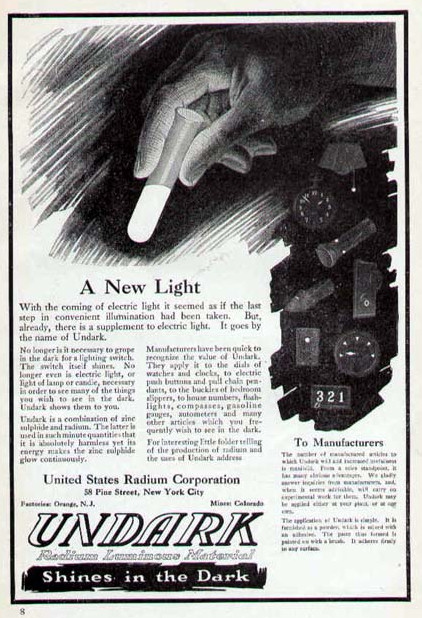Could American commanders be forgiven for sending troops so quickly into nuclear bomb sites? We’re not here to judge. We found there were many studies and formal guidelines on radiation exposure in the workplace in pre-war years. But those standards refer to sustained exposure to low doses, often internal.
It’s another thing altogether to study short-term external exposure during a military maneuver. And the criteria are radically different in a combat situation which is a life-and-death situation to begin with.
Before any workplace standards were put out, there was certainly no shortage of misguided or catastrophic applications of radioactive materials. One famous example is the story of the Radium Girls.
The U.S. Radium Corporation had a booming business making glow-in-the-dark watches and instrument faces through world war I. The products picked up a good reputation and sold well after the war. Their technicians handled bulk materials with long tongs and protective gear. But the people painting the instruments were mostly young women working bare handed, and who famously took up the practice of pointing the fine brushes with their lips.
The build up of radioactive materials in their bodies, mostly inside bones, was devastating. Their tragic story has endured, largely as an early labor rights campaign. It even became an unlikely play.
It should be pointed out that women were not the only victims of the early 20th century radium fad. Contraptions like this make old fashioned snake oil salesmen, and new-fangled diet pill promoters, look like harmless clowns.



